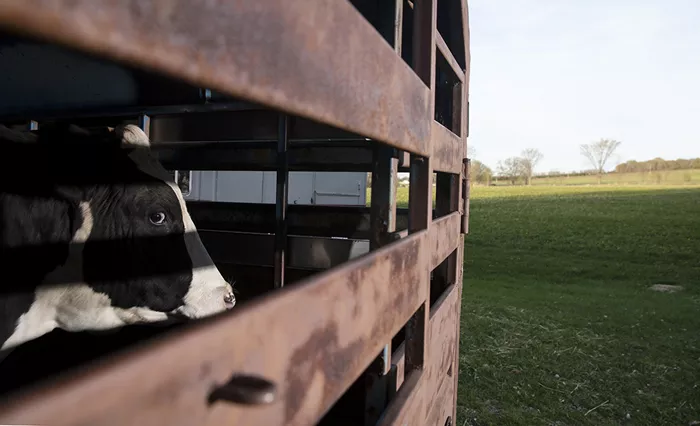The Centers for Disease Control and Prevention (CDC) confirmed on Monday that a dairy worker in Nevada has been infected with a new strain of bird flu. The worker, who had been handling sick cows, tested positive for the D1.1 strain, which has been circulating in wild birds for some time. This strain is different from the B3.13 strain, the one responsible for most human infections in the U.S.
D1.1 has a mutation that may allow it to spread more easily among mammals, raising concerns about its potential impact. This strain was first detected in dairy cows in Nevada last month, through the National Milk Testing Strategy, which monitors bird flu in cows by testing their milk.
This marks the second known instance of bird flu crossing over from birds to cows, a development that highlights the virus’s ability to evolve. “That’s a big deal,” said Michael Osterholm, an infectious disease expert and director at the Center for Infectious Disease Research and Policy at the University of Minnesota. “It’s another indication that the virus continues to change.”
Although it remains unclear how long D1.1 has been present in dairy cows or what its long-term impact may be, health experts are monitoring the situation closely. Andrea Garcia, Vice President of Science, Medicine, and Public Health at the American Medical Association, expressed concerns that the virus could become endemic in the U.S. “We are continuing to very closely follow this,” Garcia said in a YouTube video posted by the association.
The virus has had minimal impact on dairy cows so far. According to the American Veterinary Medical Association, it has generally not been deadly for cattle. In California, for example, 236 of 738 infected herds have recovered. Nationwide, there have been 962 cases in cattle. However, the virus has caused significant problems on poultry farms, leading to the culling of millions of chickens, contributing to egg shortages and higher prices.
The Nevada dairy worker’s only reported symptom was pinkeye, and the individual has since recovered, the CDC confirmed. No close contacts of the worker have shown symptoms, according to the Central Nevada Health District.
While most people infected with bird flu over the past year have experienced mild symptoms, there have been exceptions. A person in Louisiana died from the D1.1 strain last month after contact with a backyard flock and wild birds. This individual, who was over 65 and had underlying health issues, became sick in December.
The CDC reports that D1.1 was responsible for 15 of the 68 human bird flu cases in the U.S. last year, with additional cases found in Iowa, Oregon, Washington, and Wisconsin.
In response to rising concerns, the CDC has recommended increased bird flu testing for hospitalized patients, ideally within 24 hours of their admission. Despite the mild nature of most cases, the risk to the general public remains low, and there is no evidence that the virus is spreading from person to person.
However, experts like Osterholm warn that it’s essential for public health officials and scientists to prepare for the possibility of a pandemic. “We’re gonna have another influenza pandemic, and when it happens, we shouldn’t be surprised,” he said. “But will it be H5, or not? I don’t know.”
Read more:
- How 3 Health Conditions Multiply The Risk Of Liver Damage From Alcohol
- Flu Season Hits Hard: 13,000 Deaths And A Surge In Cases Nationwide
- Chappell Roan Advocates For Artist Health Care After Grammy Win


